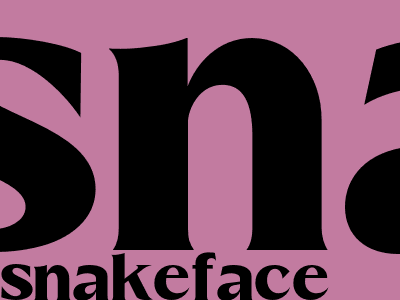
Snakeface: Controlling the Mystery
Identifying Snakeface: A Comprehensive Guide
Snakeface, a rare and enigmatic condition, manifests in distinctive facial features. Individuals with snakeface exhibit a narrow face, with a pointed chin, a prominent forehead, and deep-set eyes. The nose is often thin and hooked, and the lips are thin and downturned, giving the appearance of a snake's face.
This condition can range from mild to severe, with some individuals only exhibiting subtle facial differences, while others may have more pronounced features. Snakeface can be present at birth or develop later in life, and it is often associated with underlying genetic conditions.
Causes and Genetics
The exact cause of snakeface is not fully understood, but genetic factors are believed to play a significant role. Mutations in certain genes, such as those involved in the development of the face and skull, can lead to the formation of snakeface. In some cases, snakeface can be inherited as an autosomal dominant trait, meaning that only one copy of the mutated gene is necessary for the condition to manifest.
However, in other cases, snakeface may be caused by mutations in multiple genes or by environmental factors that disrupt normal facial development. Researchers are still investigating the exact mechanisms that lead to the development of snakeface, and further studies are needed to fully elucidate its genetic basis.
Associated Conditions and Complications
Snakeface can be associated with a range of other medical conditions, including:
- Cleft lip and palate
- Microcephaly (small head size)
- Intellectual disability
- Epilepsy
- Heart defects
- Kidney problems
The severity of these associated conditions can vary, and not all individuals with snakeface will experience complications. However, it is important to be aware of these potential health issues and to receive regular medical care to monitor for and manage any complications that may arise.
Treatment and Management
There is currently no cure for snakeface, but treatment can focus on managing the associated conditions and providing support to affected individuals. Speech therapy, occupational therapy, and special education services can help individuals with snakeface overcome challenges related to communication, fine motor skills, and learning. Surgeries may be necessary to correct cleft lip and palate or other structural abnormalities.
Genetic counseling can provide valuable information to families affected by snakeface. Genetic counselors can discuss the inheritance pattern of the condition, the risks of recurrence, and help families make informed decisions about family planning and medical care.